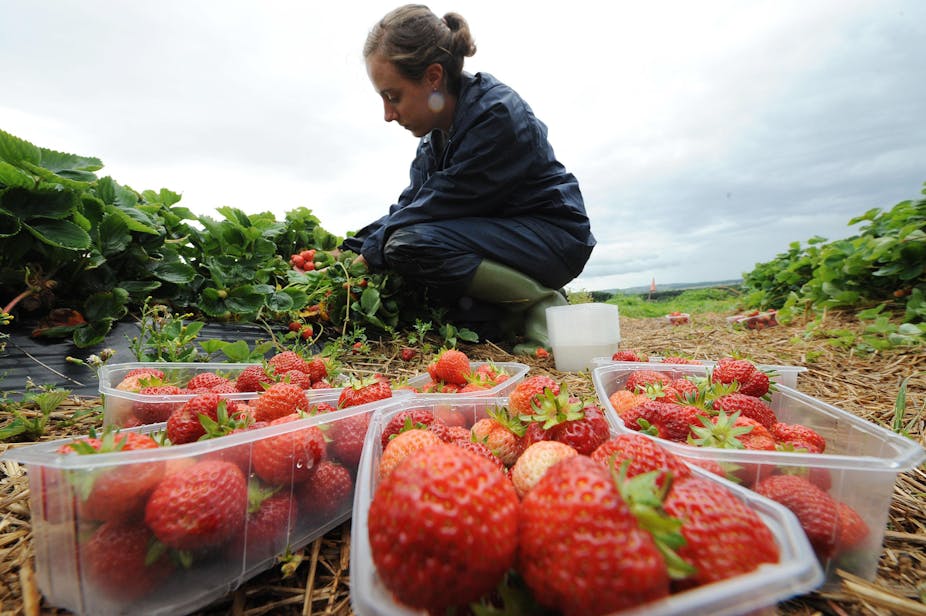Since 2004, thousands of EU nationals have travelled to Scotland each year, mainly taking on lower-skilled jobs, despite often having high levels of education. Many have stayed on, raising families and contributing to their local communities.
In contrast to UK-wide targets for lowering migration, political leaders, local authorities and civil society organisations in Scotland agree that the country needs to continue to attract and retain migrants if it hopes to meet a range of social, economic and population goals for the future.
Our recent report found that policymakers must consider the combination of goals they wish a new immigration policy to achieve. Crucially, they must also take account of the varied needs and choices of migrant workers and the attractiveness of the UK as a destination.
Immigration after Brexit
As Brexit negotiations grind on, it seems highly likely that an end to free movement will be part of whatever deal is reached – or no deal even. This raises concerns about how Scotland and other parts of the UK will recruit sufficient labour, particularly for lower-skilled and low-paid jobs in areas such as social care, agriculture, food processing, construction and hospitality.
Until now a significant proportion of these jobs have been filled by workers from the EU. Even before Britain has left the EU there have been difficulties. Nurses and care workers from Europe have left the UK in higher numbers since 2016. In agriculture, difficulties recruiting workers to the soft fruits sector have resulted in considerable losses as produce rots unpicked in the fields.
Current proposals for managing immigration for these kinds of jobs after Brexit are short-term schemes with restrictions that require migrants to leave the UK at the end of their stay. This is in marked contrast to the open-ended flexibility provided by free movement which has included rights to change employer, access to benefits, rights to family reunion, and relatively straightforward opportunities to settle.
Our report reviews a range of options available to policymakers when designing programmes to manage migration for lower-skilled jobs. Drawing on case studies from other industrialised countries such as Canada, Germany, Spain and Sweden, it shows that a variety of possibilities, incorporating different “bundles” of rights and restrictions, exist. Future immigration policy will have an impact not only on the types of migrants who are willing to come to, or settle in Scotland, but perhaps more worryingly on the country’s ability to attract migrant workers at all.
Who will come?
The report shows how the flexibility of free movement has shaped decisions made by EU migrant workers and their families over recent years. Younger, unattached migrants and those coming for a short term to earn better wages are unlikely be put off by restrictions on length of stay, access to welfare or family rights.
However, a desire to settle long term often emerges over time, and an overly restrictive system, especially if perceived to be unfair or complicated, may encourage overstaying of visas and other undocumented forms of migration and irregular migrant employment.
If longer-term stays are desired as a policy goal – as is the case in Scotland – then social and family rights are crucial. Families with young children and those seeking to settle are those most likely to be deterred by a more restrictive system. In many rural areas of Scotland, where migrants are overwhelmingly employed in lower-waged jobs, it is precisely the combination of social and economic rights allowed by free movement that have encouraged and facilitated their longer-term settlement.
What can be done?
Whatever programme is adopted after Brexit, the UK as a whole and Scotland will have to compete with other countries for migrant workers. For EU citizens, other countries within the EU where free movement still exists will become more attractive. And if entry requirements to the UK become as complex as those in other English-speaking countries such as the US, Canada or Australia, which offer warmer climates and stronger economies, these may also emerge as competition, especially for younger migrants with good English.

If EU citizens become less willing to take up jobs in the UK, this might be offset by recruiting immigrants from further afield. But employers, local communities and service providers would have to make (perhaps costly) adjustments to accommodate such a shift. Looking to the future, policymakers, employers and local authorities will need to balance a range of labour market, social and population goals in developing new immigration policies.
Crucially, they must also consider how different programmes are likely to affect migrant decisions on mobility and settlement. A shift to a more restrictive system is likely to have substantial negative long-term effects on the supply of EU citizens into lower-skilled jobs.
This will likely have wider knock-on effects for particular industries and for local communities. A recent study exploring the potential impact on the agricultural sector in Scotland found that nearly two-thirds of farmers would have to switch to other agricultural activities or diversify into non-agricultural activities. Meanwhile, falling recruitment to the social care sector could worsen an already looming crisis in social care as Scotland’s population ages and more and more people need care.

